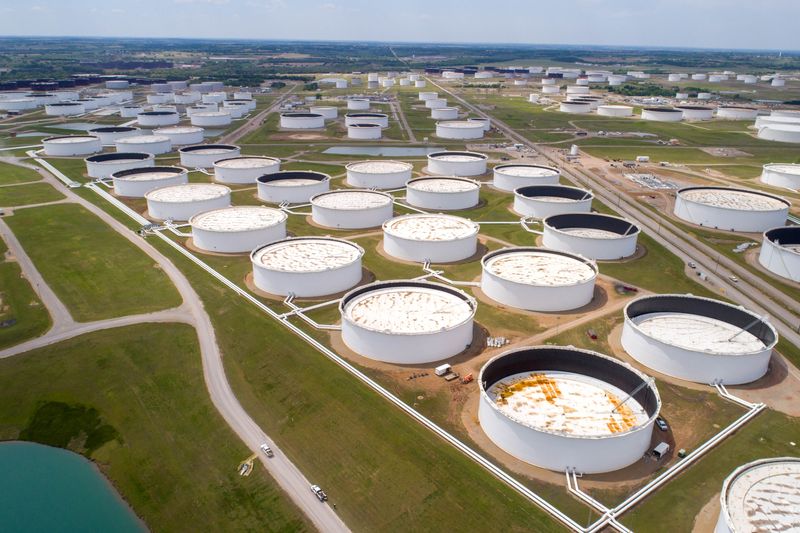Commodities
Oil drops almost 2% as investors watch Red Sea developments


© Reuters. Crude oil storage tanks are seen in an aerial photograph at the Cushing oil hub in Cushing, Oklahoma, U.S. April 21, 2020. REUTERS/Drone Base/File Photo
By Stephanie Kelly
NEW YORK (Reuters) -Oil prices dropped nearly 2% on Wednesday, eating into the previous day’s gains as investors monitored developments in the Red Sea, where shippers are returning despite further attacks on Tuesday.
futures settled down $1.42, or 1.8%, at $79.65 a barrel. U.S. West Texas Intermediate crude fell $1.46, or 1.9%, to $74.11.
Danish shipping company Maersk said it has scheduled several dozen container vessels to travel via the Suez Canal and Red Sea in the coming weeks after calling a temporary halt to those routes this month after attacks by Yemen’s Iran-backed Houthi militia.
France’s CMA CGM also said it was resuming passage through the Red Sea after deployment of a multinational task force to the region.
“I think we have to wait and see whether the increased naval patrols and rerouting of ships lead to a decline in attacks,” said Callum Macpherson, head of commodities at Investec.
Both the Brent and WTI benchmarks settled more than 2% higher in the previous session as the latest attacks on ships in the Red Sea prompted fears of shipping disruption.
The prospect of a prolonged Israeli military campaign in Gaza remained a major driver of market sentiment.
Israeli forces pummelled central Gaza by land, sea and air on Wednesday, a day after Israel’s Chief of Staff Herzi Halevi told reporters the war would go on “for many months”.
Elsewhere, oil loadings at the Russian Black Sea port of Novorossiisk were suspended because of a storm. However, the Caspian Pipeline Consortium (CPC) terminal near the port was open, Kazakhstan’s energy ministry said.
{{8849|U.S. crcrude oil inventories rose last week by 1.84 million barrels, according to market sources citing American Petroleum Institute figures on Wednesday. [API/S]
U.S. government data on stockpiles is due on Thursday.
Oil output in Russia, the third largest producer in the world after the United States and Saudi Arabia, is expected to be steady or even to increase next year as Moscow has largely overcome Western sanctions, analysts said.
Commodities
Oil prices rise; U.S. crude inventories plunge, Russia-Ukraine truce eyed
Commodities
India’s Reliance to stop buying Venezuelan oil over US tariffs, sources say
Commodities
Oil prices climb on Venezuela supply worries

 Forex3 years ago
Forex3 years agoForex Today: the dollar is gaining strength amid gloomy sentiment at the start of the Fed’s week

 Forex3 years ago
Forex3 years agoUnbiased review of Pocket Option broker

 Forex3 years ago
Forex3 years agoDollar to pound sterling exchange rate today: Pound plummeted to its lowest since 1985

 Forex3 years ago
Forex3 years agoHow is the Australian dollar doing today?

 Cryptocurrency3 years ago
Cryptocurrency3 years agoWhat happened in the crypto market – current events today

 World3 years ago
World3 years agoWhy are modern video games an art form?

 Commodities3 years ago
Commodities3 years agoCopper continues to fall in price on expectations of lower demand in China

 Economy3 years ago
Economy3 years agoCrude oil tankers double in price due to EU anti-Russian sanctions

























